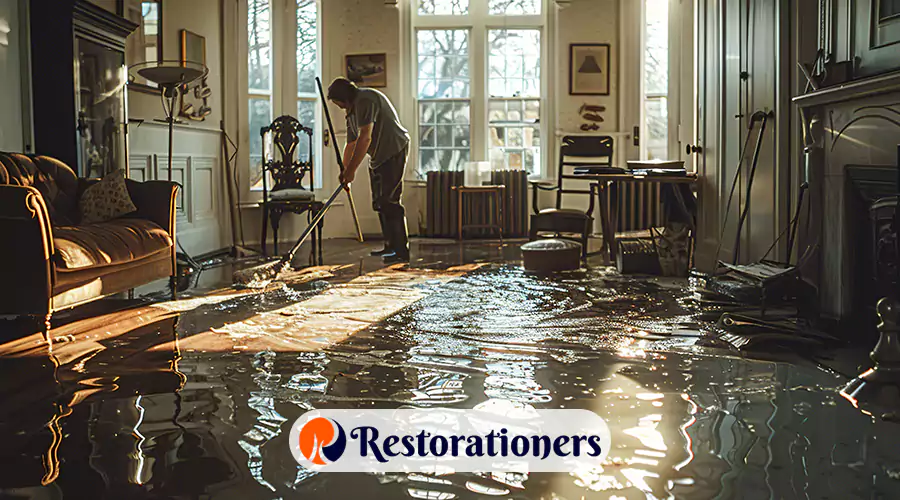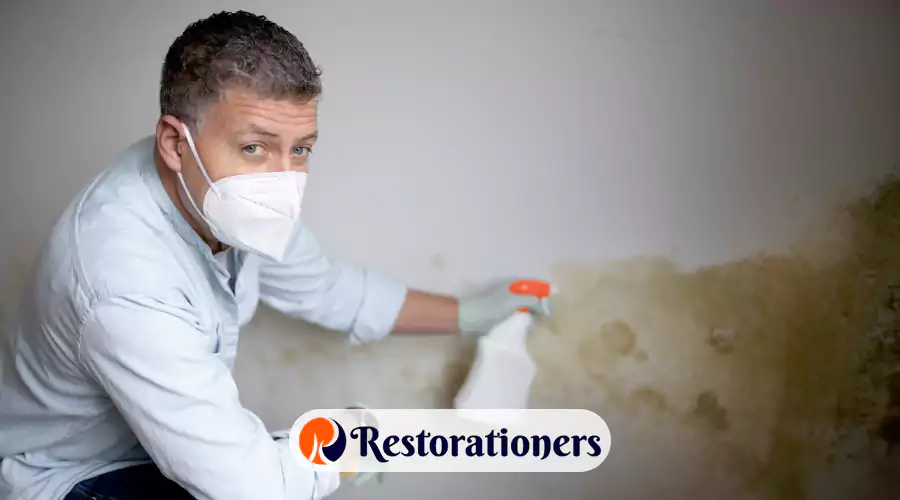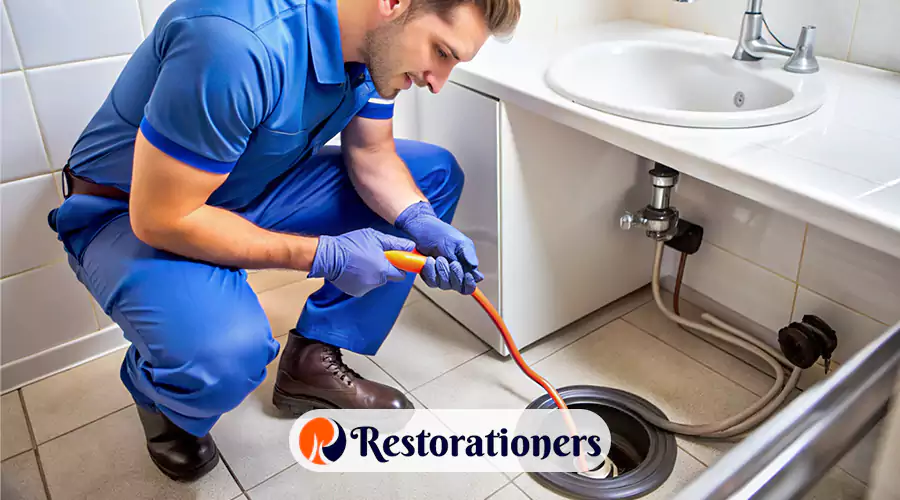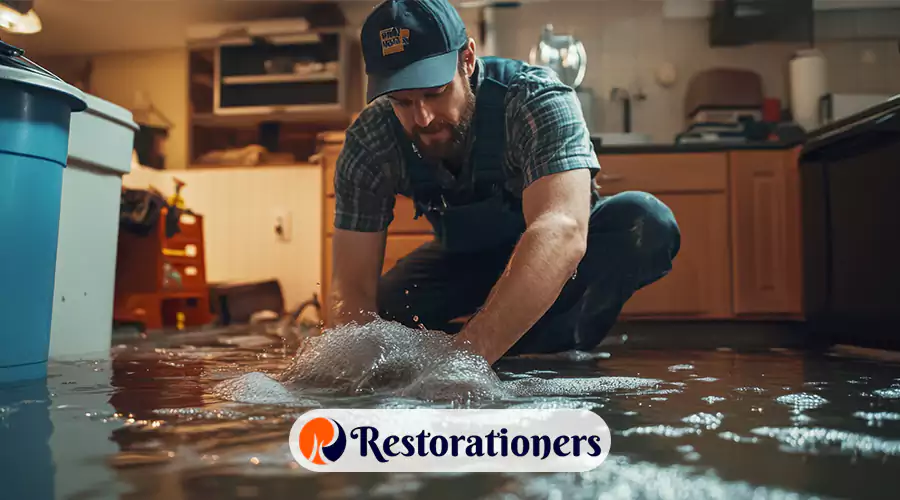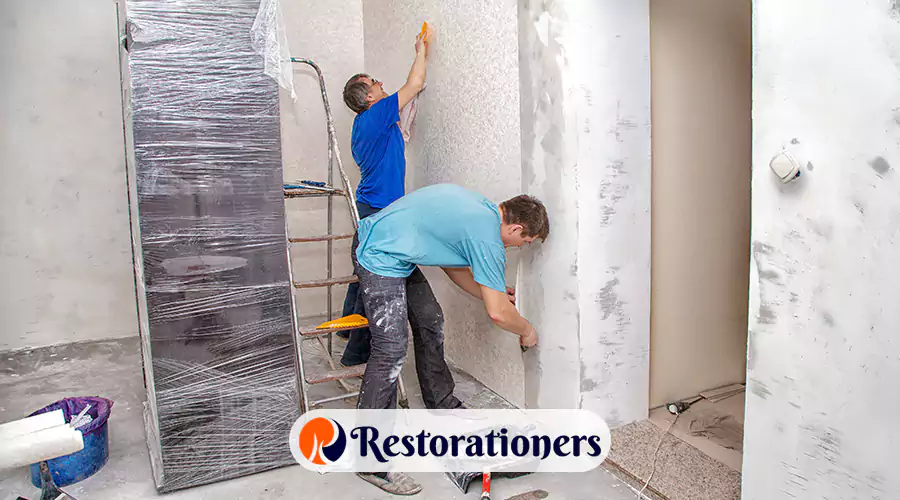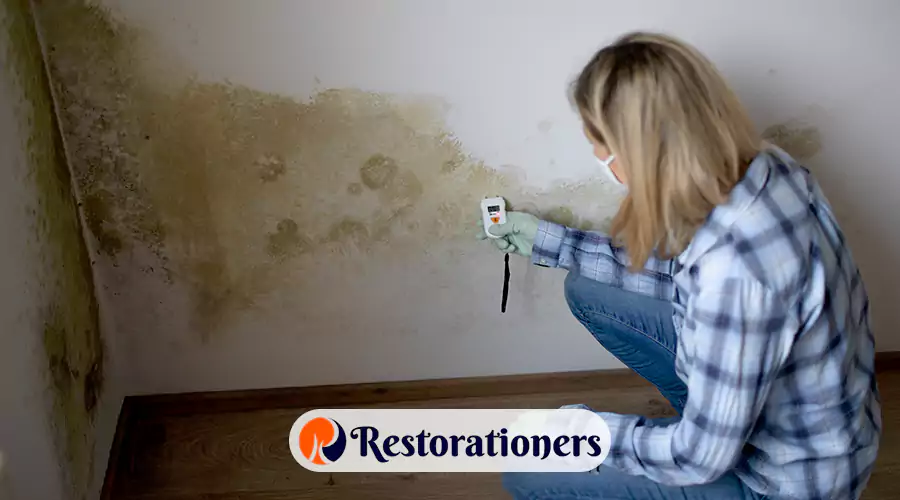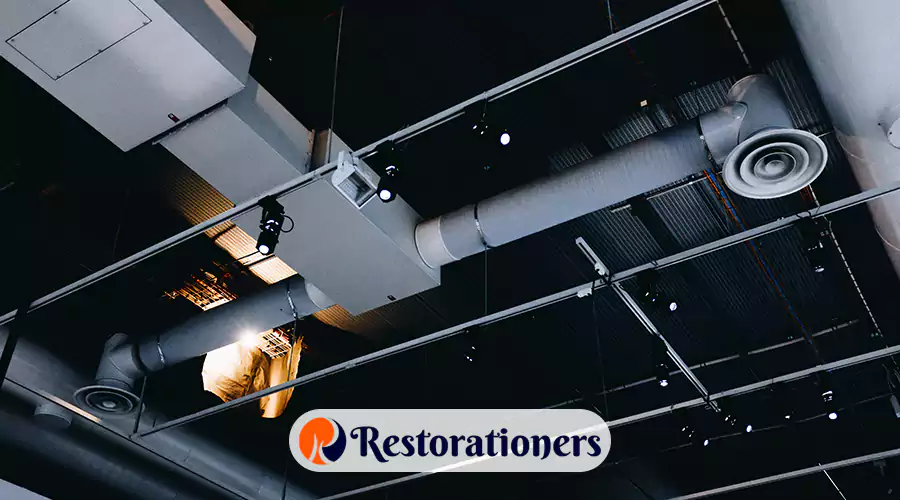Water damage is one of the most common and potentially destructive issues homeowners and business owners face. It can occur due to a variety of reasons such as flooding, leaks, burst pipes, or natural disasters. When you experience water damage, it's essential to address the problem quickly to prevent further complications like mold growth, structural issues, and the deterioration of personal belongings. In this article, we'll explain the importance of water damage restoration services and how they can help you recover. We’ll also discuss the key factors that determine how long a water damage restoration takes, focusing on how the type of damage, the tools used, and the experience of the restoration team can all impact the time frame. By the end, you’ll have a clearer understanding of what to expect during a water damage restoration process and how to plan accordingly.
On average, water damage restoration can take anywhere from 3 to 7 days for drying and cleanup, but full repairs may extend the process to several weeks depending on the severity of the damage.John Davis
What is Water Damage Restoration?
Water damage restoration is the process of cleaning up, drying, and repairing a property that has been affected by water. Whether caused by flooding, leaks, or any other source, the goal of water damage restoration is to return the property to its pre-damage condition. This process typically involves removing standing water, drying out affected areas, cleaning and disinfecting surfaces, and repairing any structural damage. So, It's not just about mopping up water; it involves a series of critical steps, from initial assessment and water extraction to dehumidification, sanitization, and ultimately, reconstruction. Depending on the extent of the damage, restoration can involve the use of specialized equipment such as industrial dryers, dehumidifiers, and moisture meters. Experts in water damage restoration have the experience and tools necessary to quickly assess the damage and begin the recovery process, minimizing long-term effects like mold and mildew growth.
How Long Does Water Damage Restoration Take?
The burning question on everyone's mind after a water incident is, "How long will this take?" The honest answer is: it depends significantly on the type and extent of the water damage you're facing. There's no one-size-fits-all answer, as each situation is unique. To truly understand the timeline, we need to break down the various categories of water damage and the specific restoration efforts they require.
To understand how long a water damage restoration takes, we have to look at the types of water damage restoration:
How long "water damage restoration in a roof" takes?
Water damage to a roof often stems from leaks, heavy storms, or compromised flashing. The water damage restoration process here involves identifying the source of the leak, repairing or replacing damaged roofing materials, and addressing any interior ceiling or attic damage. The duration can range from 1-3 days for minor leaks to 1-2 weeks for extensive structural roof damage requiring significant repairs and drying of affected attic spaces. Factors like the size of the affected area and the need for structural reinforcements will influence the timeline for water damage restoration.
How long "water damage restoration in a basement" takes?
Basement water damage is a common issue, often caused by heavy rains, plumbing leaks, or foundation cracks. Water damage restoration in a basement typically involves extensive water extraction due to its below-grade nature, followed by thorough drying, dehumidification, and potential mold remediation. For a standard flooded basement, water damage restoration can take anywhere from 3-7 days for drying and initial cleanup. If there's structural damage, extensive mold growth, or the need for foundation repairs, the full water damage restoration process could extend to 2-4 weeks or even longer.
How long "water damage restoration in a bathroom" takes?
Bathroom water damage usually results from leaking pipes, overflowing toilets, or faulty showers. Given the compact space, water damage restoration in a bathroom often requires careful demolition to expose and repair the source of the leak, followed by thorough drying and sanitization. For a relatively minor leak, water damage restoration could take 2-5 days. However, if there's extensive subfloor damage, mold growth, or the need for complete fixture replacement, the water damage restoration timeline could stretch to 1-3 weeks.
How long "water damage restoration in a kitchen" takes?
Kitchen water damage often originates from dishwasher leaks, refrigerator line bursts, or sink overflows. Water damage restoration in a kitchen typically involves detaching appliances, removing damaged cabinetry, drying subflooring and walls, and potentially repairing or replacing flooring. For a localized leak, water damage restoration might take 3-7 days. If the water has spread extensively, requiring cabinet replacement, structural drying, and flooring replacement, the water damage restoration process could easily take 2-4 weeks or more.
How long "water damage restoration in a crawl space" takes?
Crawl space water damage is often insidious, leading to significant moisture issues, mold, and structural compromise if not addressed promptly. Water damage restoration in a crawl space involves water extraction, thorough drying and dehumidification, and often extensive mold remediation. Due to the confined and often difficult-to-access nature of crawl spaces, water damage restoration can take 1-3 weeks, especially if encapsulation or significant structural repairs are needed to prevent future issues.
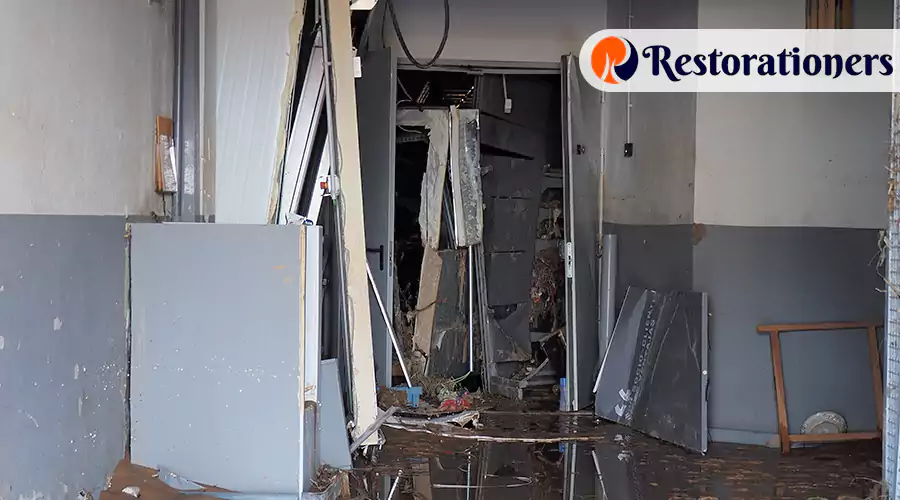
How long "water damage restoration in an attic" takes?
Attic water damage commonly stems from roof leaks, ice dams, or plumbing issues in upper floors. Water damage restoration in an attic focuses on identifying the leak source, removing saturated insulation, drying framing timbers, and preventing mold growth. For minor attic water damage, restoration could take 3-7 days. If insulation replacement, extensive drying, or structural repairs are required due to prolonged water exposure, the water damage restoration process could extend to 1-2 weeks or longer.
How long "water damage restoration in a wall" takes?
Water damage to a wall can be caused by pipe leaks, external moisture intrusion, or splashes from nearby sources. Water damage restoration in a wall involves identifying the moisture source, opening up the wall to dry out the cavity and framing, treating for mold, and then repairing and finishing the drywall. For a contained section of wall, water damage restoration might take 2-5 days. However, if multiple walls are affected, or if there's significant structural damage or mold growth, the water damage restoration could take 1-3 weeks.
How long "water damage restoration in hardwood floors" takes?
Hardwood floors are particularly susceptible to water damage, leading to buckling, warping, and discoloration. Water damage restoration for hardwood floors often involves specialized drying techniques, including professional dehumidification and potentially tenting to create a controlled drying environment. If the floors are salvageable, drying can take 1-2 weeks. However, if the damage is severe, requiring removal, subfloor drying, and new hardwood installation, the overall water damage restoration process could extend to 3-6 weeks or even longer, depending on the size of the area.
How Long Water Damage Restoration from Burst Pipes Takes?
When a pipe bursts, it can cause extensive flooding, especially if the water continues to flow before the issue is detected. Restoration usually involves draining the water, removing damaged materials, and drying the area. If the burst pipe caused significant structural damage, it may take longer to restore. The process can take between a few days to several weeks, depending on the size of the pipe, the affected area, and the extent of the damage.
How Long Water Damage Restoration from Flooding Takes?
Flooding causes one of the most severe types of water damage. The amount of water involved often requires professional-grade equipment for water extraction, drying, and dehumidification. It may also involve cleaning and sanitizing to prevent mold and bacteria growth. Restoration can take anywhere from a week to several weeks depending on the severity of the flood and the size of the property.
How Long Water Damage Restoration from Plumbing Leaks Takes?
Plumbing leaks are often slow and undetected, leading to significant water damage over time. The restoration process focuses on locating the leak, removing damaged materials, and drying out the area. Since plumbing leaks tend to cause localized damage, the restoration process could take between one to three days, depending on the scope of the issue.
How Long Water Damage Restoration from Storms Takes?
Water damage from storms, including wind and rain, can be widespread. Stormwater can cause damage to both the interior and exterior of the property. This kind of damage typically involves dealing with both standing water and potential structural damage. Restoration time can vary widely but usually takes about a week, depending on the severity of the storm and the affected areas.
How Long Water Damage Restoration from Appliance Leaks Takes?
Common household appliances, such as dishwashers, refrigerators, and washing machines, can leak and cause water damage. The restoration process often involves fixing the appliance, extracting water, and repairing the affected areas. This type of restoration typically takes between one to four days, depending on the extent of the leak and the water damage.
How Long Water Damage Restoration from Sewage Backup Takes?
Sewage backups are one of the most dangerous and complicated types of water damage. The water involved is contaminated and can cause serious health risks. Restoration includes water removal, cleaning, disinfection, and possible reconstruction. Due to the hazardous nature of the water, this type of restoration can take anywhere from a few days to over a week, depending on the extent of contamination.
How Long Water Damage Restoration from Mold Growth Takes?
Mold growth is often a result of prolonged water damage, especially in areas that remain damp for extended periods. Mold remediation is an essential part of water damage restoration, and depending on the amount of mold, it may take several days to weeks to fully treat the affected areas. The restoration process also involves drying and removing damaged materials.
Water damage restoration is an essential process for homeowners and business owners looking to repair and restore their properties after an incident. The time it takes to restore your property depends on the type of water damage, the extent of the damage, and how quickly you engage professionals. By understanding the different types of water damage and the restoration process, you’ll have a better idea of how long the restoration might take in your specific case. Factors such as severe damage, the size of the affected area, and the need for repairs can all influence the timeline. Additionally, waiting for insurance approvals or having to order replacement materials can delay the restoration process.
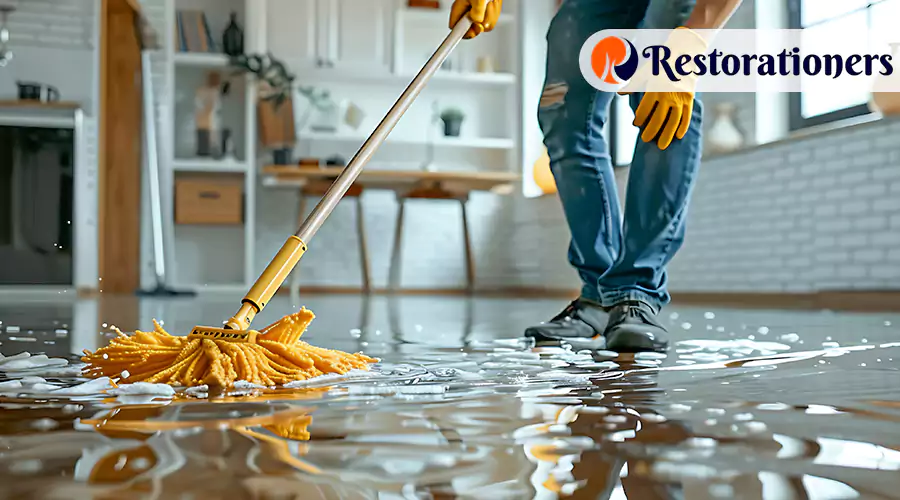
Bonus Tip: How to reduce the time on water damage restoration
To reduce the time required for water damage restoration, it’s essential to act quickly. First, stop the water source to prevent further damage. The sooner you contact a professional restoration service, the faster they can begin extracting water using specialized equipment like industrial pumps and dehumidifiers. Ventilating the affected areas by opening windows and using fans can also speed up the drying process. Removing wet materials, such as soaked carpets and drywall, helps minimize damage and prevents mold growth. Additionally, using moisture meters to detect hidden moisture and keeping your insurance provider informed can ensure that the restoration process stays on track. By taking prompt and efficient action, you can significantly reduce the overall restoration time.
 Damage-Specific RestorationGeneral Restoration ServicesSpecialized RestorationCleanup & Removal ServicesBack to Main MenuDamage-Specific RestorationWater Mitigation Water Damage Flood Damage Basement Flood Clean Up Storm Damage Restoration Hurricane Damage Restoration Winter Storm Damage Restoration Water Leak Detection Services Fire Damage Smoke Damage Restoration Soot Removal Mold Damage Mold Remediation Biohazard Cleanup Earthquake Restoration Mudslide Damage Restoration Disaster RestorationBack to Main MenuGeneral Restoration ServicesEmergency Restoration Services Commercial Restoration Services Residential Restoration Services Advanced Restoration Building Restoration House Restoration Restoration Contractors Structural Restoration 24 Hour Emergency Water Damage RestorationBack to Main MenuSpecialized RestorationDocument Restoration Hardwood Floor Refinishing Marble Restoration Kitchen Restoration Bathroom Restoration Roof Restoration Wood Restoration Wood Floor Restoration Tile Restoration Concrete Restoration Foundation RestorationBack to Main MenuCleanup & Removal ServicesOdor Removal Services Air Duct Cleaning Hazardous Waste Disposal Asbestos Abatement Demolition Contractors Emergency Board Up
Damage-Specific RestorationGeneral Restoration ServicesSpecialized RestorationCleanup & Removal ServicesBack to Main MenuDamage-Specific RestorationWater Mitigation Water Damage Flood Damage Basement Flood Clean Up Storm Damage Restoration Hurricane Damage Restoration Winter Storm Damage Restoration Water Leak Detection Services Fire Damage Smoke Damage Restoration Soot Removal Mold Damage Mold Remediation Biohazard Cleanup Earthquake Restoration Mudslide Damage Restoration Disaster RestorationBack to Main MenuGeneral Restoration ServicesEmergency Restoration Services Commercial Restoration Services Residential Restoration Services Advanced Restoration Building Restoration House Restoration Restoration Contractors Structural Restoration 24 Hour Emergency Water Damage RestorationBack to Main MenuSpecialized RestorationDocument Restoration Hardwood Floor Refinishing Marble Restoration Kitchen Restoration Bathroom Restoration Roof Restoration Wood Restoration Wood Floor Restoration Tile Restoration Concrete Restoration Foundation RestorationBack to Main MenuCleanup & Removal ServicesOdor Removal Services Air Duct Cleaning Hazardous Waste Disposal Asbestos Abatement Demolition Contractors Emergency Board Up